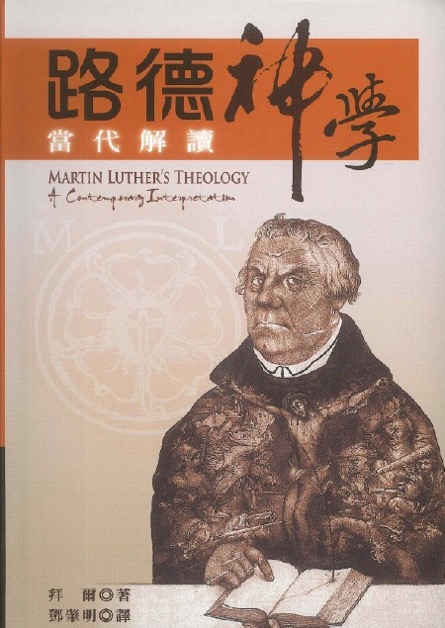值得感恩的是,在最近十多年,不少來自兩派的學者,都開始聆聽並考慮另一方的觀點。 1 例如,「傳統派」的學者 馬可.沙菲 (Mark Seifrid) 就指出,「傳統派」將「稱義」與「成聖」截然二分的處理,是值得商椎的。 2 當我們細閱路德的著作時,就發現他對「信心」及「行為」的理解,並非如後世教會傳統一般,將它們看成兩個可獨立處理的時段。 3 德國路德宗的神學家奧斯瓦爾德.拜爾 (Oswald Bayer) 就指出,路德眼中的信心,「是被動的,是『因為我們讓上主單獨在我們裡面作工,而我們自己卻盡全力不再作甚麼自己的事。』」。 4 在這充滿弔詭的定義裡,我們看見路德對信心的定義,在本質上根據不能與信徒的生命成長二分。 5 事實上,將「稱義」與「成聖」切割成兩個獨立階段的,是路德的晚輩腓力·墨蘭頓 (Philipp Melanchthon):更正教第一位系統神學家。就是他,將路德的思想系統化,並將「稱義」(Justification) 狹義為「歸算」(imputation) 。 6 就如道格拉斯.穆爾 (Douglas J. Moo) 曾說,「改教家」(reformers) 傾向將活生生的信徒論述普遍化 (universalize),亦導致當代的神學家,與保羅第一世紀的意思脫節。7

與此同時,「新觀派」的鄧恩亦承認,藉割禮等「盟約徽章」(covenantal badge) 去分隔猶太人及外邦人的社交惡習,在保羅所指的「律法的功夫」(works of the law) 中,只佔其中一個部份。8 換言之,鄧恩的「保羅新觀」,並不是要推翻「傳統派」對稱義的理解,而是補足。 9 賴特亦承認,「恩約會藉」的宣告 (declaration of covenant membership),亦不能與法庭式的赦罪二分。10 羅馬書第四章的解釋,實在不必在救恩 (soteriology) 或「恩約會藉」(covenant) 兩者中二擇其一。 11 後保羅新觀的學者安德遜 (Garwood P. Anderson),在欣賞「新觀派」貢獻的同時,亦提出四個他們矯枉過正的地方。12

第一,保羅信主的歷程的確有別路德,但基督對他的影響,不只是一個植根猶太傳統的召命 (call),亦是一個信念改變的「皈依」(conversion)。第二,桑德斯 的「恩約守法」(covenantal nomism) 雖然捕捉得到第一世紀的猶太人,與上主關係建立的方式,並非「外在行為律法主義」(legalism)。但「維持」(staying in) 在約裡的要求,本來就與人有義務去行律法,非常類似。「恩約守法」的現象,亦不能涵蓋第二聖殿時期猶太教的多樣性。第三,鄧恩對「律法的功夫」(works of the law) 的理解,成功地教我們關注猶太人與外邦人社交界線 (social demarcation) 的角色,但卻忽視了保羅的著作,包含了大量「律法」與「恩典」二元對立的段落。最後,以上主忠守猶太人的約 (Jewish covenant) 去理解保羅的思想,或許已經被不少學者接納;但賴特的釋經,卻往往過份側重這支配性的框架 (overarching framework),而看輕個別段落的主題(例如羅馬書第四章有關罪的論述)。13
這種彼此聆聽的氛圍,漸漸造就了一個打破二元敵對的動力…原來,上帝引導的聆聽,真的能帶來視野的融合。To Him Shall we Listen, To Another Shall we Talk.待續…
大家好,我是葉應霖,英文名是 Scott。希望您藉著呢個網更深認識神,別人及自己。
Footnotes:
- Bird, “Incorporated Righteousness,” 258–9; David Shaw, “Romans 4 and the Justification of Abraham in Light of Perspectives New and Newer,” Themelios 40 no. 1 (2015): 53; Anderson, Paul’s New Perspective, 104. 安德遜引用道格拉斯.穆爾 (Douglas J.Moo) 為例子,指出穆爾雖然維持傳統派的保羅觀,但他對羅馬書及加拉太書的詮釋,就遠離了「傳統派」系統教義式的手法,轉而近似「新觀派」的賴特。參 Douglas J. Moo, Epistle to the Romans, NICNT (Grand Rapids: Eerdmans, 1996), 432–70。
- Mark A. Seifrid, “Melanchthon and Paul on the Question of Imputation: Recommendations on a Current Debate,” in Justification: What’s at Stake in the Current Debates, ed. Mark Husbands and Daniel J. Treier (Downers Grove: IVP Academic, 2004), 143.
- Seifrid, “Melanchthon and Paul,” 143–5; WA 40:233, 25–27.
- 拜爾著, 鄧肇明譯:《路德神學 : 當代解讀》, (香港 : 道聲,2011),頁51; Oswald Bayer, Martin Luther’s Theology: A Contemporary Interpretation (Grand Rapids: Wm. B. Eerdmans, 2008), 42–3, 引述 WA 6:244.3–6。路德稱呼這種神人弔詭的動態為「被動狀態的生活」(vita passiva)。將信心與行為分割,根本不符路德的神學。值得留意的是,哲學家保羅.利科 (Paul Ricoeur) 也曾就信徒在讀經時與上主之動態,提出一種超越信念與行為二分的框架。他認為「放下自我」(divestment, 法文 dépouillement),就是人不斷讓神透過文本主導人生命的方式。篇幅所限,在此不詳談。參 Paul Ricoeur, “The Hermeneutics of Testimony,” in Essays on Biblical Interpretation, ed. L.S. Mudge (Philadelphia: Fortress, 1980), 147–53。
- Scott Hafemann, “Yaein: Yes and No to Luther’s Reading of Galatians 3:6–14,” in Galatians and Christian Theology: Justification, the Gospel, and Ethics in Paul’s Letter, ed. Mark W. Elliott and others (Grand Rapids: Baker Academic, 2014), 129. 另參 Alister E. McGrath, Iustitia Dei: A History of the Christian Doctrine of Justification, 4th ed. (New York: Cambridge University Press, 2020), 238–40, 250.
- Seifrid, “Melanchthon and Paul,” 143. “Melanchthon and Luther differ dramatically from one another on the question of justification because they proceed from radically different perspectives…Melanchthon takes the human being as his starting-point, and thinks of justification in terms of human qualities and response. It is surely for this reason that he has such great difficulty in understanding Luther, who views justification first and foremost in terms of the work of the Gospel, the word of God, which, apart from any contribution from the fallen human being, brings the new creature into existence, in whom faith and all its works are present.” 另參 Bird, “Incorporated Righteousness,” 254; Philip Melanchthon, Melanchthon on Christian Doctrine: Loci Communes 1555, trans. Clyde L. Manschreck (Grand Rapids: Baker, 1965), 155–56. 根據沙菲,派博在 Counted Righteous in Christ 的觀點,就是承自墨蘭頓。參 Seifrid, “Melanchthon and Paul,” 148–9; Piper, Counted Righteous in Christ, 53–64. 關於將保羅「系統化」及「教義化」的危機,參 Don Garlington, “Imputation or Union with Christ? A Response to John Piper,” Reformation and Revival Journal 12 (2003): 100–2.
- Douglas Moo, ““Law,” “Works of the Law,” and Legalism in Paul,” Westminster Theological Journal 45 no. 1 (1983): 88。這弱點,正是新觀派的強項。參 Stephen Westerholm, “What’s Right About the New Perspective on Paul,” in Studies in the Pauline Epistles: Essays in Honor of Douglas J. Moo, ed. Matthew S. Harmon and Jay E. Smith (Grand Rapids: Zondervan Academic, 2014), 240。以上「傳統派」學者的觀點,正正見證了他們近年開始接納,甚至是欣賞「新觀派」重視保羅猶太背景的取向。相比之下,在十多年前,一位「傳統派」學者 David Farnell 就對「新觀派」作出猛烈的抨擊,視他們的解經,都是假借「歷史批判」的方式,凌駕聖經真理。參 Farnell, “The New Perspective on Paul: Its Basic Tenets, History, and Presuppositions,” 189–243。
- James D. G. Dunn, “The New Perspective: Whence, What and Whither?,” in The New Perspective on Paul, (Grand Rapid: Wm. B. Eerdmans, 2008), 23.
- Dunn, “Whence, What and Whither?,” 23; Dunn, “What’s Right About the Old Perspective on Paul,” 229; Anderson, Paul’s New Perspective, 46.
- N. T. Wright, “The Shape of Justification,” Bible Review 17:2 (21/8/2020).
- Shaw, “Romans 4 and the Justification of Abraham,” 57.
- Anderson, Paul’s New Perspective, 37–54.
- 筆者認為,賴特以上主盟約(covenant) 的框架去理解羅馬書第四章,其實跟沙菲以上主的應許 (promise) 去詮釋亞伯拉罕的信心(羅四),是異曲同工。參 N. T. Wright, “Paul and the Patriarch: The Role of Abraham in Romans 4,” JSNT (2013): 217–8; Seifrid, “Melanchthon and Paul,” 146–9. 兩者的用語雖然不同,但同樣留意到神的行動(約或應許),是在亞伯拉罕的信心以先。基督的首要定位,是實現上主那本已命定的約及應許,而非將自己的義歸算 (imputation) 給人。前者的來源是上主與猶太人的立約 (covenant),後者是第一世紀羅馬法律中的合約 (contract)。是誰引入這合約的角度,去主導我們對稱義的理解?墨蘭頓。參 Mark A. Seifrid, Christ, Our Righteousness: Paul’s Theology of Justification (Downers Grove: IVP Academic, 2001), 175; McGrath, Iustitia Dei, 239.










